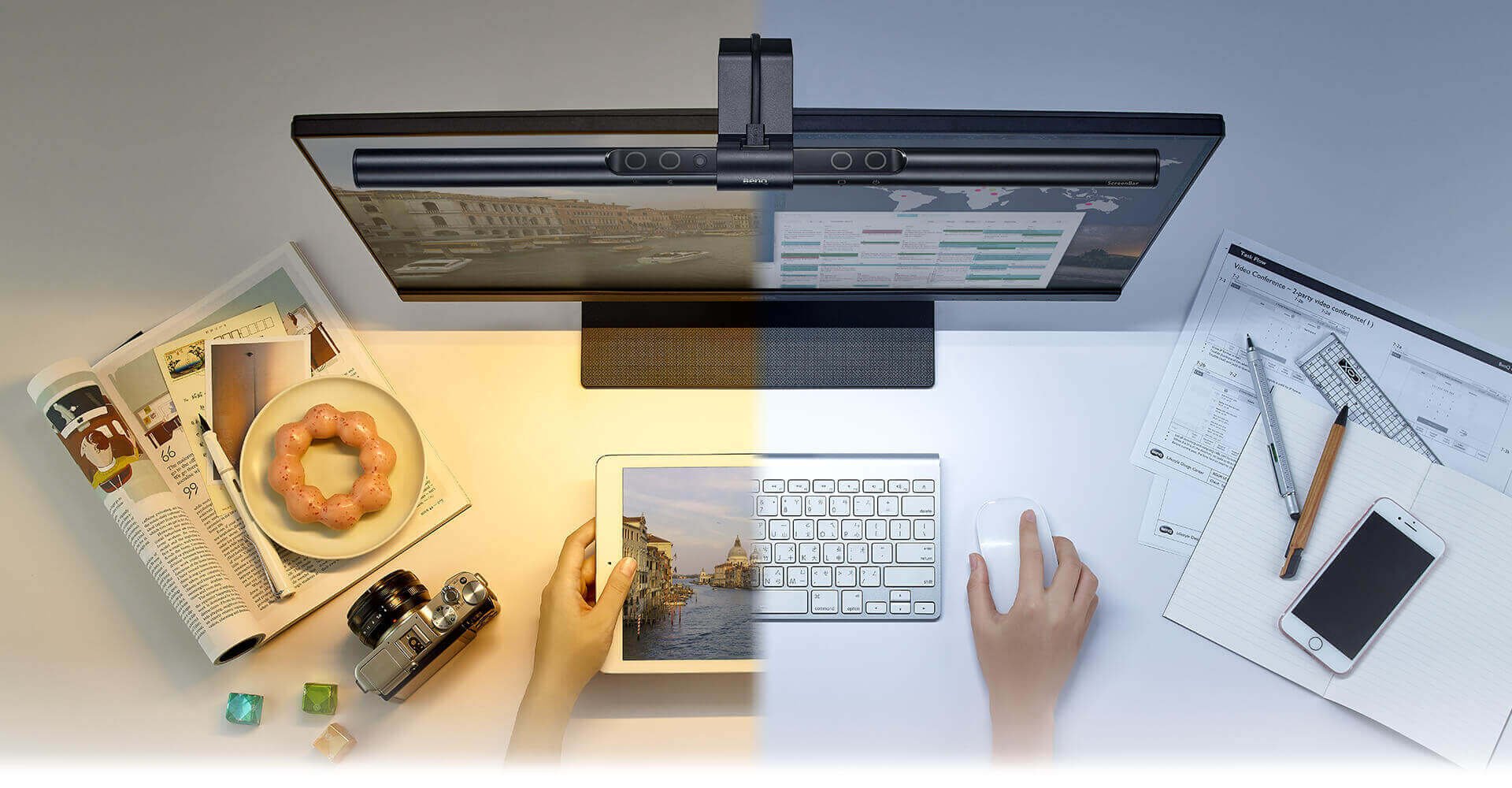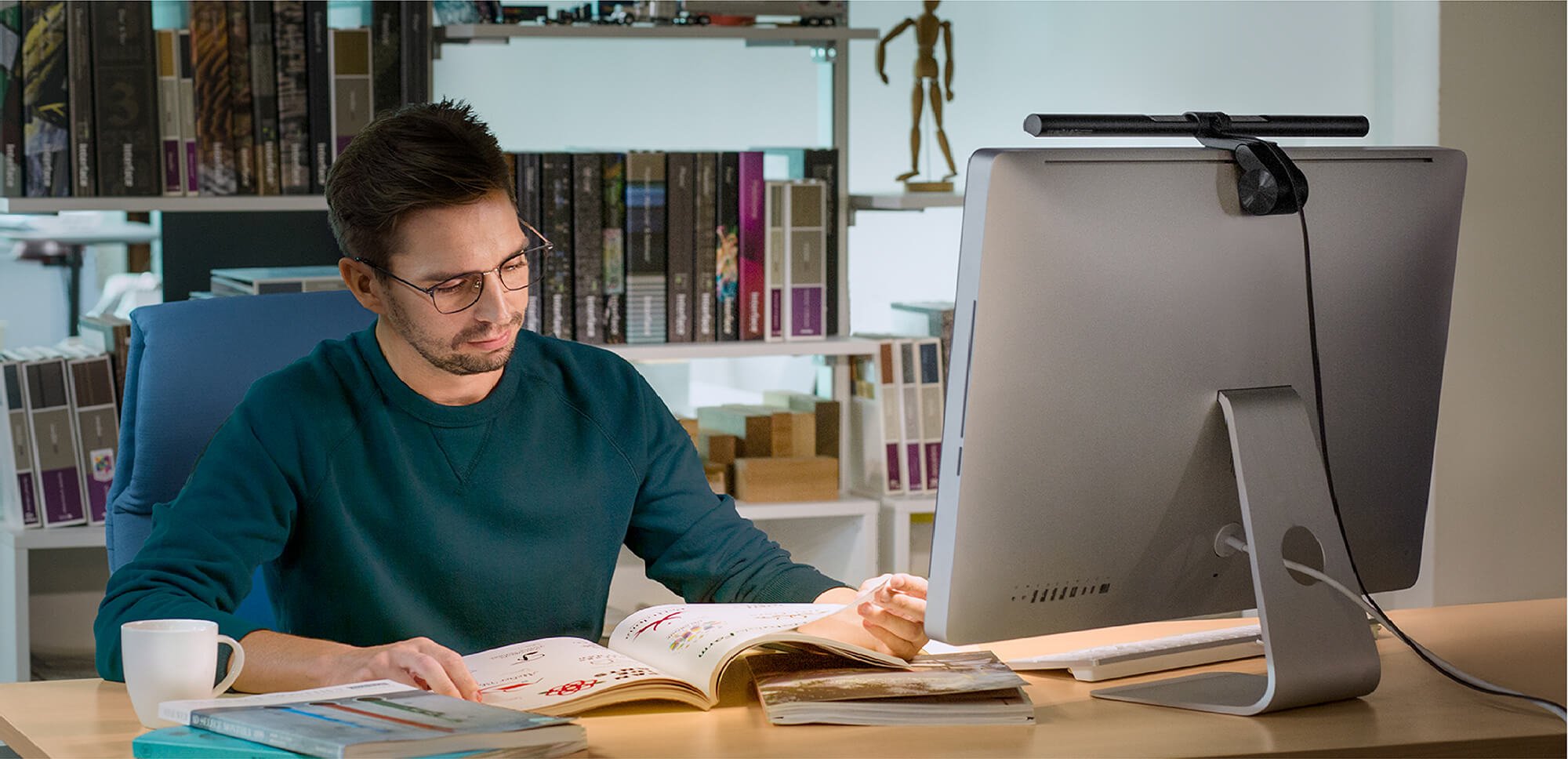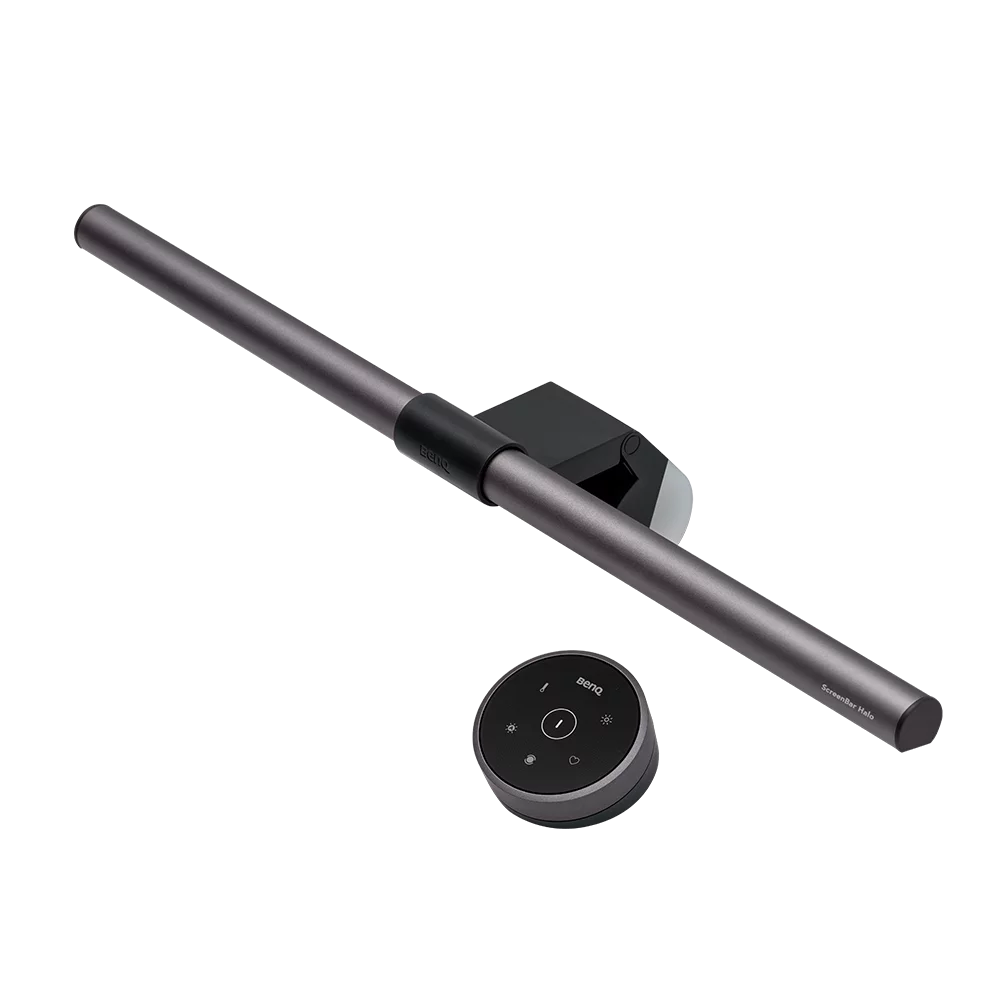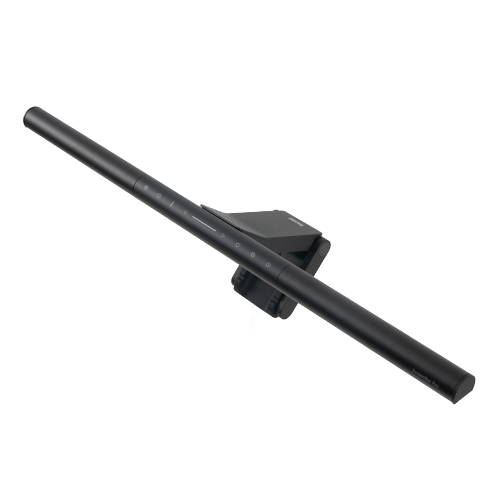Projector
Monitor
Lighting
Interactive Display | Signage
Remote Work & Learning

Ergonomic lighting design in the office plays a critical role in improving workplace comfort, well-being, and productivity. By balancing light levels, minimizing glare, and promoting natural postures, ergonomic lighting creates a healthier and more effective workspace. This page will guide you through the core principles of lighting ergonomics, offering valuable knowledge to help you optimize your office environment.
Alongside valuable insights, we offer a comprehensive white paper that addresses the most common lighting challenges in offices and illustrates the critical connection between lighting and workplace ergonomics, as well as introducing how BenQ’s ScreenBar® series monitor light bars can help.


What are the ideal light intensity and color temperatures for ergonomic lighting?
Light intensity and color temperature are crucial factors in ergonomic lighting design. The Illuminating Engineering Society (IES) is a recognized authority on lighting standards and practices. Aim for 300-500 lux of light intensity for general office work. This level provides adequate illumination without causing eye strain.
Color temperature, measured in Kelvin, affects mood and alertness. In workplaces, a range of 3000-4000 Kelvin is ideal, offering a balance between warm and cool light.
Here is a quick reference:
| Task | Recommended Lx | Ideal Color Temperature |
|---|---|---|
| General office work | 300 - 500 lx | 3000 - 4000 k |
| Detailed tasks | 500 - 750 lx | 4000 - 5000 k |
| Reading | 450 - 550 lx | 2700 - 3000k |
Note that individual preferences may vary, so adjustable lighting is often the best solution.
How can we minimize glare and manage shadows in ergonomic lighting?
Glare and shadows can significantly impact visual comfort and productivity in the workplace.
To reduce glare:

For effective shadow management:

Remember, the goal is to create a balanced lighting environment that minimizes eye strain and enhances visual clarity.

What is task lighting, and how does it enhance ergonomic workspaces?
Task lighting is your focused ally in ergonomic workspaces. It provides targeted illumination for specific activities, reducing eye strain and improving productivity. Here's what you need to know:
Pro tip: Position task lights to minimize shadows and glare on your work surface. For computer work, place the light to the side to avoid screen reflections.
Note that task lighting complements, but not replaces, ambient lighting. Use both for optimal ergonomic benefits.
How does ambient lighting contribute to an ergonomic environment?
Ambient lighting sets the stage for a comfortable, productive workspace. It's the foundation of your lighting scheme, providing overall illumination. Let's break it down:
Key considerations:
Mind that the goal is to create a balanced, glare-free environment that supports various activities throughout the day.

How does ergonomic lighting boost workplace efficiency?
Proper lighting isn't just about seeing better, it's about working smarter. Ergonomic lighting can significantly enhance productivity and focus in the workplace. Here's how:
Consider this: In a well-lit environment, employees report a 15% increase in focus. That's like gaining an extra hour of productive time in a standard workday!
But it's not just about brightness. The right color temperature can make a difference too. Cooler lights (4000K-5000K) can boost alertness during the day, while warmer tones (2700K-3000K) are better for winding down.
Keep in mind that everyone's needs are different. Adjustable lighting allows each worker to find their sweet spot for peak performance.
What impact does ergonomic lighting have on employee health?
Ergonomic lighting isn't just about seeing better, it's about feeling better too. Proper lighting can significantly impact employee health and well-being. Let's shine a light on the benefits:
But that's not all. Ergonomic lighting also supports our natural circadian rhythms. This means:
Think about it: When was the last time you left work without tired eyes? With proper ergonomic lighting, that could be every day.
It is important to know that a healthier workforce is a happier, more productive workforce. It's a win-win for everyone.
Enhance your Workspace with ScreenBar® Series
The Ergonomic Lighting Companion Tailored for Screen Users

BenQ ScreenBar®, the world's first and best monitor light bar, offers a superior eye-care solution for your workspace. Its advanced asymmetrical optics eliminate screen glare and minimize eye strain, providing optimal illumination across your desk.
With real-time auto-dimming that adjusts to 500 lx, ideal for computer-focused environments, ScreenBar® series monitor light bars enhance the often inadequate lighting from standard ceiling lights. It also serves as a more eye-friendly alternative to traditional desk lamps, which can cause distracting screen reflections due to their symmetrical optics.
Discover the benefits for yourself: upgrade to ScreenBar® series today and create an ergonomic workspace that enhances your productivity and comfort!
How do you evaluate your workplace's existing lighting setup?
Before making changes, you need to understand your current lighting situation. Follow these steps to assess your workplace:
Pro tip: Conduct assessments at different times of day to account for changing natural light conditions.
Remember: What looks good on paper might not work in practice. Always involve employees in the assessment process, they're the ones using the space daily.
What factors should you consider when selecting ergonomic lighting?
Selecting the right ergonomic lighting is crucial for creating a comfortable and productive workspace. Use this checklist to guide your choices:
Key consideration: One size doesn't fit all. The best lighting solution varies depending on the workspace layout, tasks performed, and individual preferences.
Action point: Conduct a trial period with different lighting options before making a final decision. This allows employees to provide feedback and ensures the chosen solution meets everyone's needs.

What innovations are shaping the future of ergonomic lighting?
The world of ergonomic lighting is constantly evolving. Read on to learn about exciting developments that could transform your workspace:
The future of ergonomic lighting is bright indeed. As these technologies become more accessible, we'll see workplaces that are not just well-lit, but truly responsive to human needs.

As we've seen, ergonomic lighting is more than just illumination, it's a key factor in creating a comfortable, productive, and healthy workplace. Let's recap the main points:
So, what's the next step? Start by evaluating your current lighting setup. Are there areas for improvement? Remember, even small changes can make a big difference.
Consider this: If you spend 40 hours a week at work, that's over 2,000 hours a year under your office lights. Doesn't it make sense to ensure those hours are spent in the best lighting possible?
Investing in ergonomic lighting is investing in your team's comfort, health, and productivity. It's a bright idea that pays off in the long run.
Enter your contact information and tell us about the lighting issues your team is facing. Get a FREE ScreenBar sample* to try out and our white paper explaining how effective lighting boosts employee performance and well-being.
Get started today and light up the path to better workplace productivity.
*Limited quantity.

BenQ’s ergonomic lighting solutions, such as our ScreenBar® series, are specifically designed to address the challenges posed by poor lighting conditions in the office. By offering adjustable brightness and color temperatures, our lights adapt to individual needs, reducing glare and preventing eye strain. The result is a healthier, more comfortable working environment where employees can focus better and sustain their energy throughout the day.
ScreenBar®
Series LineupScreenBar®

ScreenBar®
Halo
ScreenBar®
Pro
Ergonomic lighting goes beyond comfort, it's about optimizing productivity by helping your employees perform at their best for extended periods. Take action today to create a healthier workspace that enhances both employee well-being and productivity.